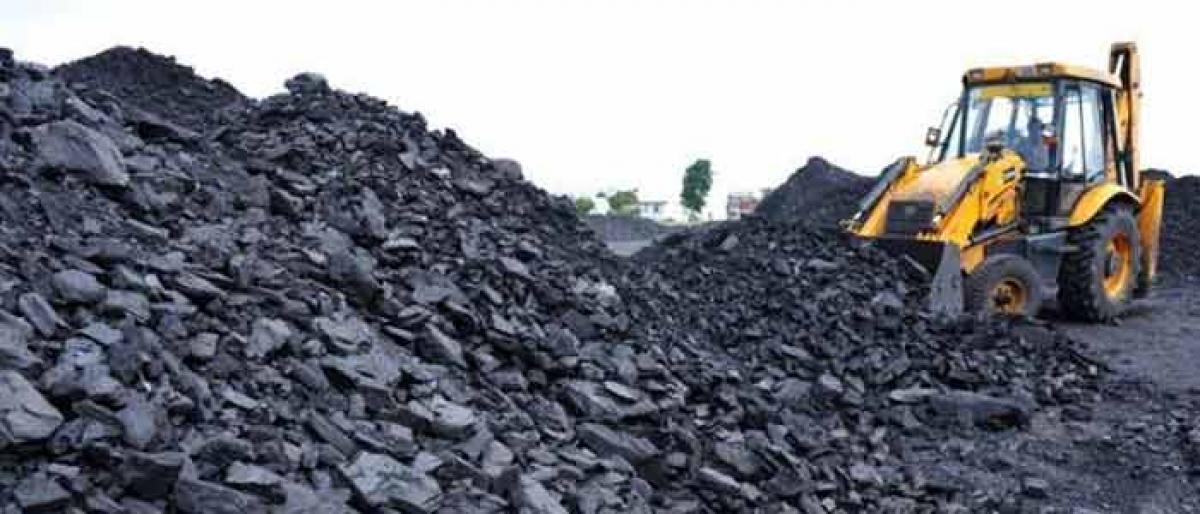Live
- Gali Janardhana Reddy announces gold-plating of Anjaneyaswamy Temple tower
- Private practitioner found operating from govt clinic
- PM stresses on thinking out-of-the-box in every sector
- Lokayukta cracks down, seizes illicit assets worth crores
- Farmers protest over delay in canal repair
- Amid continuing furore, five more maternal deaths occur in State
- Fostering a robust innovation
- New AP tourism policy hailed
- Village that gave land for Suvarna Vidhana Soudha, a picture of apathy
- What’s The Matter At Hand?
Just In

The Narendra Modi Government which has been pushing structural reforms of one kind or the other since it came to power in 2014 has taken yet another bold step earlier this week.
The Narendra Modi Government which has been pushing structural reforms of one kind or the other since it came to power in 2014 has taken yet another bold step earlier this week. It opened up coal mining for private sector, ending more than four-decade old monopoly of Coal India Limited (CIL) at the national level and the Singareni Collieries Company Limited (SCCL) in Telangana.
Like in other sectors, private companies were present in coal mining industry till 1973. But the government nationalised commercial coal mining, shutting the doors on the private sector role in the key mining sector. Though the sector was slightly liberalised in early 1990s, the entry of private players was restricted to power generating companies which were allowed to own captive mines. Beyond that, CIL’s hold on coal mining remained unchallenged.
Perhaps, the ever-increasing demand for power in the country has now forced the Central government to go ahead with the latest move. Numbers reveal that more 70 per cent of electricity being consumed in the country now is generated from coal-fired thermal plants. That goes on to indicate the importance of thermal coal in the country’s energy mix. India is home to 309 billion tonnes of coal reserves. But CIL had managed to mine just 554 million tonnes in FY17.
Its production was just 385.6 million tonnes in the first nine months of the current financial year. So, it is unlikely that CIL will be able to meet its target of 600 million tonnes by March 31 this year when the ongoing financial year ends. Nonetheless, the government has set an ambition production target of one billion tonnes by 2020 for CIL. Going by the progress the public sector major is making, it may not reach anywhere near that target. With CIL and SCCL unable to produce enough coal to meet the full requirement of the country’s needs, India is relying on imports which account for nearly 30 per cent of the total consumption.
As an industry leader pointed in the past, coal imports are gobbling up precious foreign reserves. That doesn’t look prudent when the country has large coal reserves. In this context, the private sector participation is expected to help the country reduce its coal imports. That will obviously have a positive impact on the current account deficit (CAD). The other advantage is that private companies will bring latest technologies and more investments into coal mining sector. That will not only improve productivity, but also generate more jobs.
The Central government has taken a right decision by announcing that coal blocks will be allotted through auctioning. So, like telecom spectrum, coal blocks will also generate decent revenues for the exchequer. But enough steps should be taken to see that country will not witness a repeat of 2G scam in coal allocations.
But the government’s privatisation move in coal sector conflicts with its ambitious targets in clean energy like solar and window power. In developed countries, there is a perceptible trend towards clean energy and investments into thermal power are on the decline. It's good for the world if India also treads similar path.

© 2024 Hyderabad Media House Limited/The Hans India. All rights reserved. Powered by hocalwire.com







